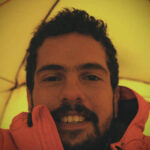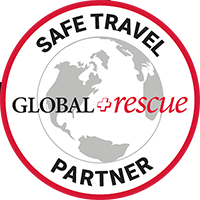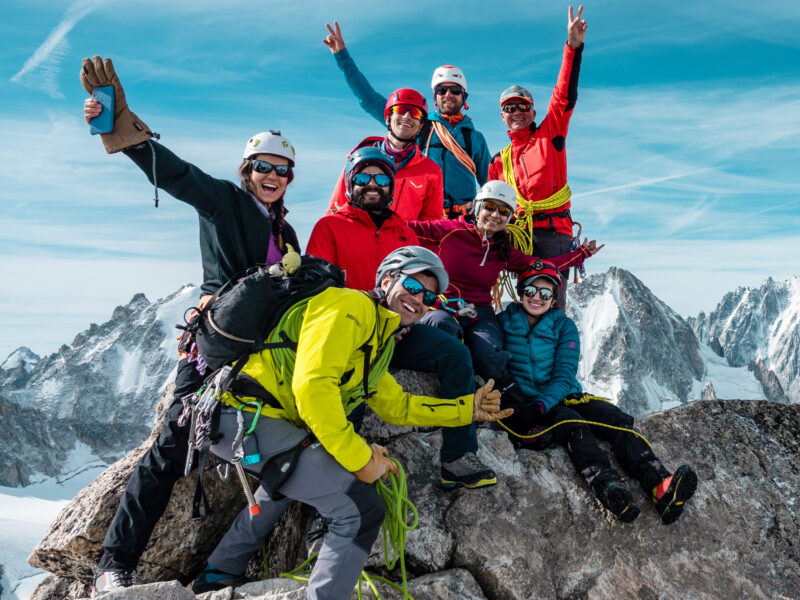BY Hazem El Shamy | February 01 2018
The Life Altering Power of Mountains


“Climbing is an inherently selfish act, but if I can ignite the fire in just one other person, perhaps it’s not so selfish anymore.”
I’m Hazem. I used to say that I have approximate knowledge of many things. I didn’t want to excel in anything, but I wanted to find meaning in different, sometimes irrelevant, activities. Recently, it shifted from music and film to alpinism.
I started to take climbing seriously in 2015. I watched a documentary about 3 top alpinists climbing a really difficult, never-been-climbed-before route in the Indian Himalayas. At the time, I was rock climbing in the weekends as a hobby. I had no idea what alpinism was and what it entailed, but I was hooked. I wanted to feel everything they felt.
I connected with climbers in Egypt and around the world to learn more about Himalayan climbing. I wanted to go above 8000 meters without oxygen, but I didn’t quite understand anything about climbing at high altitudes; It was hard to embrace the idea without any experience. However, To get to 8000 meters I’d need to climb several peaks at 6000/7000m to see how my body reacts to the altitude and to gain experience on ice and snow. Around the same time, I met Marco, my climbing mentor. Together, we visited many routes he opened in the past and discovered new ones around Sinai. We would use the rope systems and techniques I’d be applying in the Himalayas for practice.
Time moved on and I was becoming obsessed. I was looking for something more technical (but not extreme) than the frequently climbed 6000m peaks around Nepal, rarely climbed, and remote. I put my sights on Nirekha peak, a 6169 meter mountain 3 km west of Everest. I chose to climb the beautiful ’S’ shaped west ridge. There was a considerable lack of information, because it was opened for climbing by the government of Nepal in 2002. Only 6 teams have successfully reached the summit by 2016. I reached out to a Nepali climber, Chhewang Palden Sherpa and his partner, Urkin Sherpa, who were interested in climbing the same mountain. On the 15th of October, 2016, I touched down in Kathmandu for the first time.
I was carrying way too many things I didn’t need, which made the 15 day trek to the base of the mountain very uncomfortable. We expected the actual climbing to be 2 days to the summit, establishing one or two high camps on the ridge. When we arrived at base camp, we saw new features that weren’t apparent in the pictures we studied. There was a lot more rocky ground to negotiate, and most of the upper pitches were steep ice and snow that didn’t look like a lot of fun. We decided to spend 3 days on the mountain rather than just 2. I didn’t care about how fast we climbed, as long as we did. What terrified me the most was the glacier. It was huge in the pictures we studied, and the ridge leading up to the west face was covered in snow. The ice has mostly melted away exposing a nightmare of loose rock to be negotiated to gain the ridge proper. This was the first time I saw the effects of global warming in real life; the image was burned in my mind forever.
After a rest day at base camp, we climbed 400 meters to establish camp 1 and to leave some equipment behind for the summit push. It was an ordinary day and, as expected, the afternoon clouds were sweeping across the valley below us. We went back down as planned and found our base camp almost completely destroyed; Tents shredded, food gone, equipment scattered around the valley floor. A freak storm hit base camp while we were at camp 1. I knew the expedition was over. We didn’t have time to bring more food and reorganize. To be honest, I was very relieved. I felt the onset of altitude sickness when we arrived the previous night. Oh, and did I mention how big this thing is? I was scared. Night crept in but not before we managed to salvage a small bag of almonds.

“We climbed higher until there was no higher left. We spent 10 minutes at the top, and I felt like absolute shit.”
Each of us got 6 pieces.
We took shelter in our damaged tents, shared a cigarette and slid into our sleeping bags, knowing tomorrow morning we would head back home. A little before midnight, Chhewang began prepping his bag and asked me to do the same. I asked him if he’s feeling okay (my initial thought was the altitude must be affecting his cognitive skills). He said ‘We’re here now. It would be a shame if we don’t climb a little’. He explained that we can go for 10 hours with our share of almonds, so we should at least climb up to camp 1 to bring back our cache and take some pictures of the route, so we are more prepared for a second attempt next year. We’ve also been walking for 15 days to get here, we might as well do something before we leave. I agreed, as long as we climb in alpine style (depending more on ourselves than the equipment) to save time and energy. The 6 teams before us took 2 days to arrive to the summit, so I wasn’t worried about reaching the top, I was only interested in having a little fun before going back home. With barely any gear, we put our headlamps on and took our first steps into one of the darkest, coldest nights I’ve ever experienced, tied together on a 60 meter stretch of rope.
We took a few falls negotiating the rocky ridge. We didn’t use the fixed ropes because we didn’t fix them ourselves (before I ever climbed a mountain, I vowed to never clip a rope I didn’t fix myself), so it wasn’t pretty. We soloed a nightmarish section of extremely steep powder snow to cross over from the ridge to the west face. We had to be unroped because it was a no fall zone. You fall – you die, and kill your partner with you. This is where I gave up and asked Urkin, hanging below me, to pass me some rope and a sling so I can go back down, but he didn’t speak english very well. He didn’t understand what I was saying. I had no choice but to continue the traverse. After 8 hours of non-stop climbing, we arrived at where we would have established camp 2. I came to believe we actually make the summit. We climbed higher until there was no higher left. We spent 10 minutes at the top, and I felt like absolute shit. I was quite negative about the whole thing. I thought, this isn’t for me, I’m never doing this again. But when I arrived back to base camp I was already discussing plans for 2017 with Chhewang and Urkin.
I just returned from the summit of Kyajo Ri (6189m) last month. It was a fantastic climb; no epics or misadventures. I was carrying very little and gave myself a lot of time to acclimatize and to enjoy the trek in. Although Kyajo Ri was a much more technical climb (Nirekha is graded at D- on the alpine scale, Kyajo Ri at TD+), I was much more relaxed throughout. Chhewang, Urkin, and I spent most of our time on the mountain teaching each other dirty slang in our native tongues. On the summit, my mind was clear. It felt like all there ever was and ever will be is right here, right now. I wasn’t thinking about anything at all (for once), only taking in the beautiful views 6000 meters above the world.
Coming back down, I felt a change. For the first time, I had the need to be great at something. I wanted to express myself on all the glaciers, ridges, and summits around the world and I understood there is no point in rejecting the idea anymore. I believe 2018 will be the start of a journey that is both beautiful and terrifying at once. I also understood the importance of sharing these adventures with family and friends. Climbing is an inherently selfish act, but if I can ignite the fire in just one other person, perhaps it’s not so selfish anymore.
Climb hard!
About The Author
Hazem is an avid high altitude mountaineer and adventurer that has helped lead hundreds of climbers to summits across the Himalayas, Andes, Atlas, and Caucus mountain ranges. He believes that inspiration is best served on a sharp ridge 6000 meters up in the sky, and is committed to making big mountain goals more achievable to the everyday climber.
About Life Happens Outdoors
At Life Happens Outdoors, we believe in the power of nature to transform lives. As proud members of the Adventure Travel Trade Association (ATTA) and the World Travel & Tourism Council (WTTC), our team of certified guides and outdoor professionals is committed to the highest standards of safety, sustainability, and excellence.
Discover more about our story and mission on our Meet LHO page, or explore our curated adventures such as the Tour du Mont Blanc Trek, the Climb of Kilimanjaro, and Chasing the Northern Lights.














